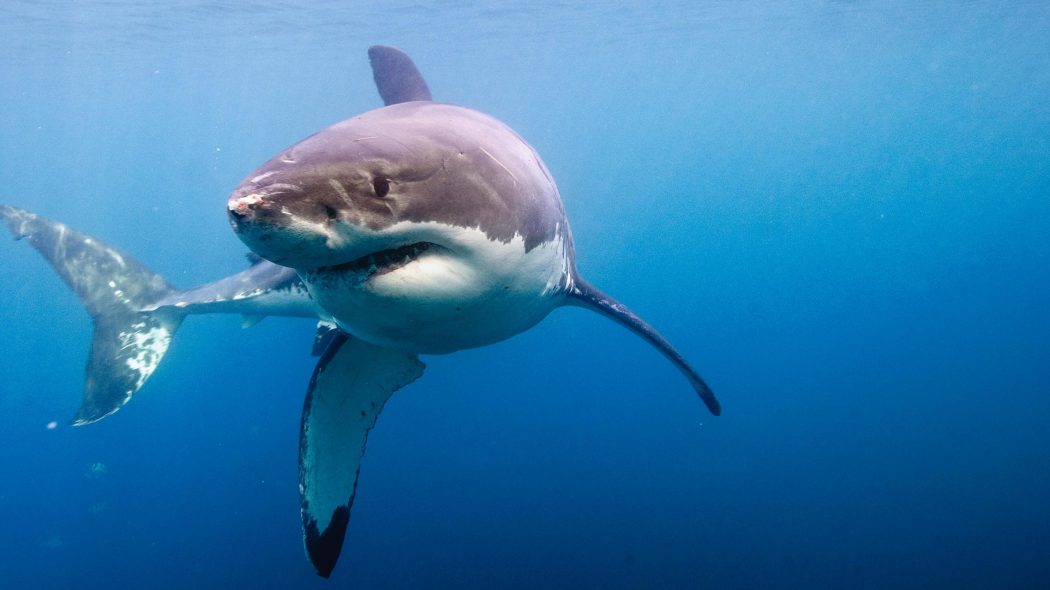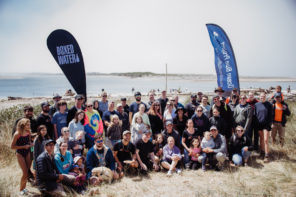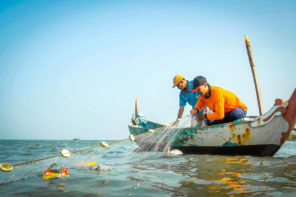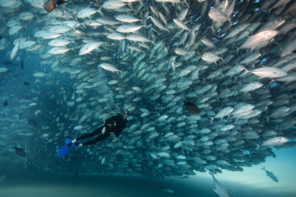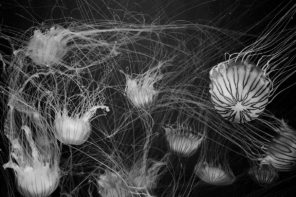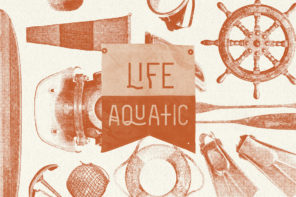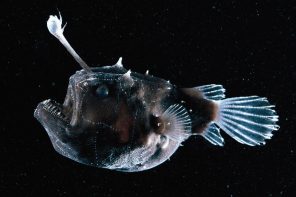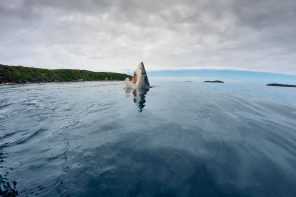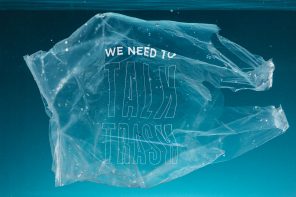In or Out of the Water, Who’s At the Top of the Food Chain?
We asked 30 people who we admire to each interview one person they admire. That’s the concept behind the Interview Issue presented by Design Within Reach.
AllSwell founder Laura Rubin chose ocean-going journalist Susan Casey. Casey is the author of the New York Times bestsellers “The Wave: In Pursuit of the Rogues, Freaks, and Giants of the Ocean,” and “The Devil’s Teeth: A True Story of Obsession and Survival Among America’s Great White Sharks.” She has some pretty well-informed opinions on that salty liquid that makes up 98% of our planet and its inhabitants.
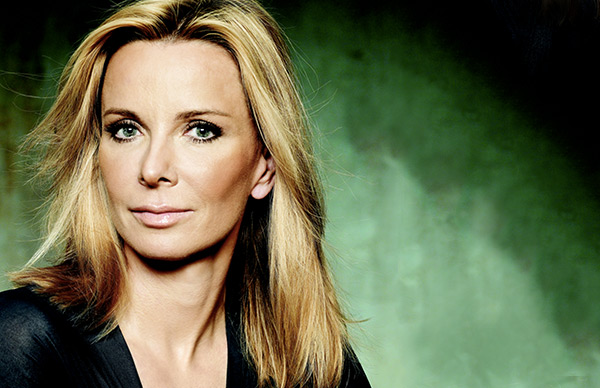
Susan Casey
Laura Rubin: You’ve logged a lot of hours in the ocean. In my experience, this can change a person. Have there been specific moments where you recognized a shift?
Susan Casey: For me, being Canadian, freshwater came before oceans because I grew up in lake country, and I had a long career as a competitive swimmer. Lakes and pools had a huge presence in my life before I made my way to the ocean. When I first started open water ocean races, I was terrified of fish. I swam across an entire channel between Lanai and Maui with my eyes closed, because I was so afraid of seeing a fish.
It wasn’t until the late ’90s, and especially when I got to the Farallon Islands to report “The Devil’s Teeth” that I started to become more in tune with the ocean. Once you spend time around great white sharks, you’re not scared of reef fish anymore.
Then, in 2008, I moved to Hawaii to report “The Wave.” It was like, “This is my place. This is my element.” Sometimes I swim alone in Hawaii and I have this deep sense of peace, knowing that this is our planet. The world is 98% saltwater by volume. People think of it as 72% because it covers that percentage of the earth, but when you look at the depth and overall living space by volume, this is a saltwater planet.
LR: How do you think your time spent in saltwater has changed you?
SC: It helped me discover who I actually am. It’s my space of meditation, it’s my place of worship. It’s also my time to really sort things out. When I’m stuck, I go in the water with a specific question and I come out with an answer.
The world is 98% saltwater by volume.
LR: Let’s talk about the dolphin brain. One fascinating concept in “Voices In the Ocean” is the cetacean’s ability to think, feel, and act as a group. The marine mammals you write about seem to be much smarter and wiser than humanity, yet here we are at the top of the evolutionary food chain, making a mess of things. Why do you think that is?
SC: It’s interesting to put it that way. What’s so intriguing about cetaceans is that their evolutionary path is dramatically different than ours—and vastly longer. It’s hard to say who’s at the “top.” I would make an argument that they are at the top of the evolutionary food chain.
Their brains have evolved over 95 million years; ours has evolved over somewhere around two million years. To quote John Lilly: “We are babies in the universe.” They are not. Another of Lilly’s famous quotes is: “We are often asked, ‘If the dolphins are so intelligent, why aren’t they ruling the world? My very considered answer is this—they may be too wise to try to rule the world.’”
Like ours, the cetacean brain has two hemispheres, and it’s very complex. But theirs is bigger, and they can work each hemisphere independently. Their limbic systems have an extra lobe. This is the seat of emotion—so it’s likely that they process emotion in highly sophisticated ways. Scientists suspect they may even have a different concept of self, more of a collective self. You don’t see dolphins acting in their own self-interest at the expense of the pod. The phrase “every man for himself” doesn’t seem to have a place in the dolphin world.
Climate is an angry beast, and we’re poking it with sticks.
LR: What do you think that we need to learn from dolphins?
SC: Well, if our species were to survive for the next 93 million years—and we became as old as dolphins and whales are now—doesn’t it seem like more empathy is an adaptation we’d need to make? There’s a lot going on in the world where it’s like, “We’re over here, we don’t really care about those people over there,” and that’s what is tearing us apart.
We care, at least some of us care a lot, but is it enough? Given that there are seven billion people here now, and there will be 10 billion by 2050, we need to learn to get along a whole lot better than we do now. That’s just straightforward.
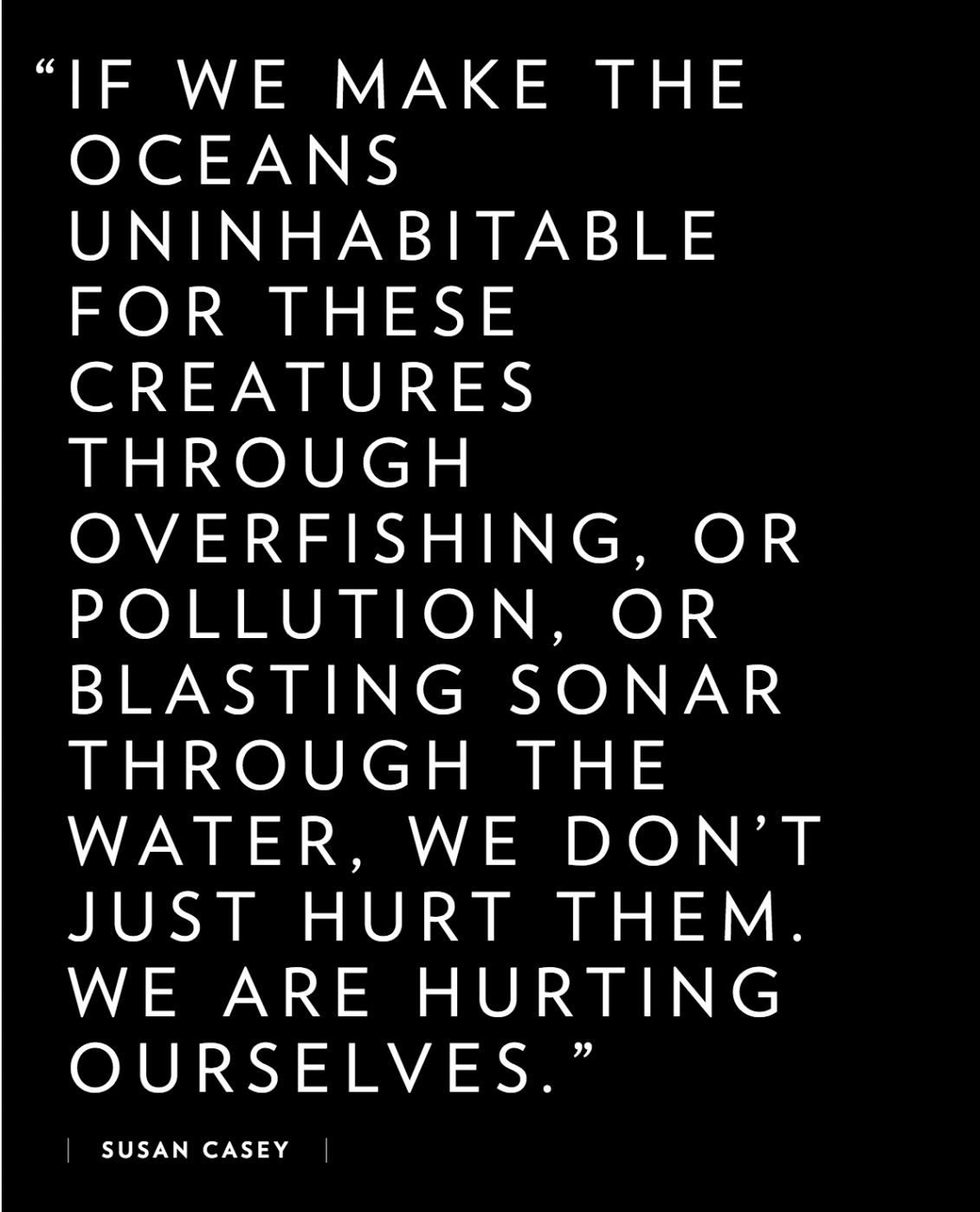
LR: To that end, you’ve said “The Wave” is really a book about climate change. So, real talk. How bad is it? What might this new watery world look like?
SC: Waves will be bigger, storms will be more intense, storm surges will be higher. Elevated sea levels mean that coastlines will change. And we like to live near the water. Sometimes I describe climate change as no problem whatsoever if you don’t have any attachment to anything you have right now. We’ll just build new cities, we’ll build new infrastructure, but of course, that’s not the way we’re set up. We’re acting as if things will be static forever. Meanwhile, our civilization popped up during an extraordinarily calm, stable period in geologic time.
Greenhouse gasses cause warming, period. We cause greenhouse gases. The more difficult part is modeling nature’s nonlinear responses to the changes we’re making. Climate is radically complex. We think, “OK, it gets a little warmer, the water gets a little higher,” like it’s this incremental, gradual thing. But based on all the evidence, it’s not like that at all. Nature is filled with tipping points. All of a sudden, an entire ecosystem just collapses. There is at one point a step too far—and we don’t know where any of those tipping points are. Bill McKibben put it beautifully when he said: “Climate is an angry beast, and we’re poking it with sticks.”
We know this thing is rolling down the tracks at us. It’s here now. It’s just impossible to overstate the magnitude of risk we’re taking right now by allowing the government to be so aggressively stupid.
LR: There’s my soundbite, thank you. To that point, we seem to have trouble as a species successfully problem-solving the biggest issues. If it’s smaller, more straightforward, then we can do it. We don’t have a great track record at working on a global scale.
SC: We’ve evolved well to deal with threats we can see, but we’re flummoxed by the more abstract dilemmas that require us to work together—again, back to this notion of becoming more collective. Instead of running in different directions, we need to run in the same direction very quickly to tackle the global problems we’re facing. Which is far easier said than done. This moment in history is a real crucible. We’re being called on to become wise before we’re evolutionarily ready.
LR: In the face of that, one could just say, “There’s nothing I can do. It’s too much, it’s too overwhelming.” What steps can an individual take? Let’s take one issue that you referred to as the “plastic plague.” What steps can an individual take to help?
SC: How we use plastic is a symptom of a bigger illness. So we know that plastic doesn’t biodegrade for centuries. We don’t know exactly how long it takes because every bit of plastic we’ve made is still here—about 9 billion tons. That’s more than a ton per person. What this highly durable material should be used for is stuff that needs to last for a very long time. We know this. The real question is: how will we use this information? Will we become smarter about how we use materials? Or will we continue to make disposable objects out of plastic and then live with billions of tons of it swirling around in the oceans?
I think it’s important to direct the proper amount of outrage towards companies that use plastic wastefully. We can always vote with our wallets—and if we all do that this bad behavior will stop.
Sometimes I watch the news, and I find myself circling the drain. Once you’re locked into that cycle, it’s hard to feel positive. But there are also what I call the glimmers: these moments, amazing people and movements, where you can see little cracks of light on the horizon. It’s important not to lose sight of those.
There’s something about great white sharks that roles up every human fear into one neat package.
LR: In The Devil’s Teeth, you write about encountering a huge great white shark “within petting distance.” When people ask me as a surfer, “How can you do that, aren’t you afraid of the sharks?” I tell them I’m more afraid of people texting and driving. Just do the math. What is it about these animals that inspires such terror?
SC: In the very deepest part of our reptilian core we’re afraid of things that can eat us. There’s something about great white sharks that roles up every human fear into one neat package. I separate them from other sharks.
I certainly have a healthy respect for a tiger shark or a bull shark, but great white sharks are different: their size, their girth, their solidity. There’s something about this alpha-shark that affects us and I think that fear has trickled down to every shark now. No other animal comes with its own scary theme music.
They’re not out to get us at all. For white sharks, they wouldn’t survive by eating us, because they’re one of the few warm-blooded shark species. Their bodies are massive blast furnaces: to hunt us would cost more calories than we would provide. They need a whale or a seal, something blubbery. It’s just not worth it for them to go after scrawny humans, it’s bad strategy. And they didn’t get to be 400 million years old by acting like idiots.
Forty thousand people are killed by dogs in the United States alone every year. More people are killed by vending machines falling over on them, or touching their tongue to a nine-volt battery each year than by sharks.
LR: Vending machines are the real enemy.

